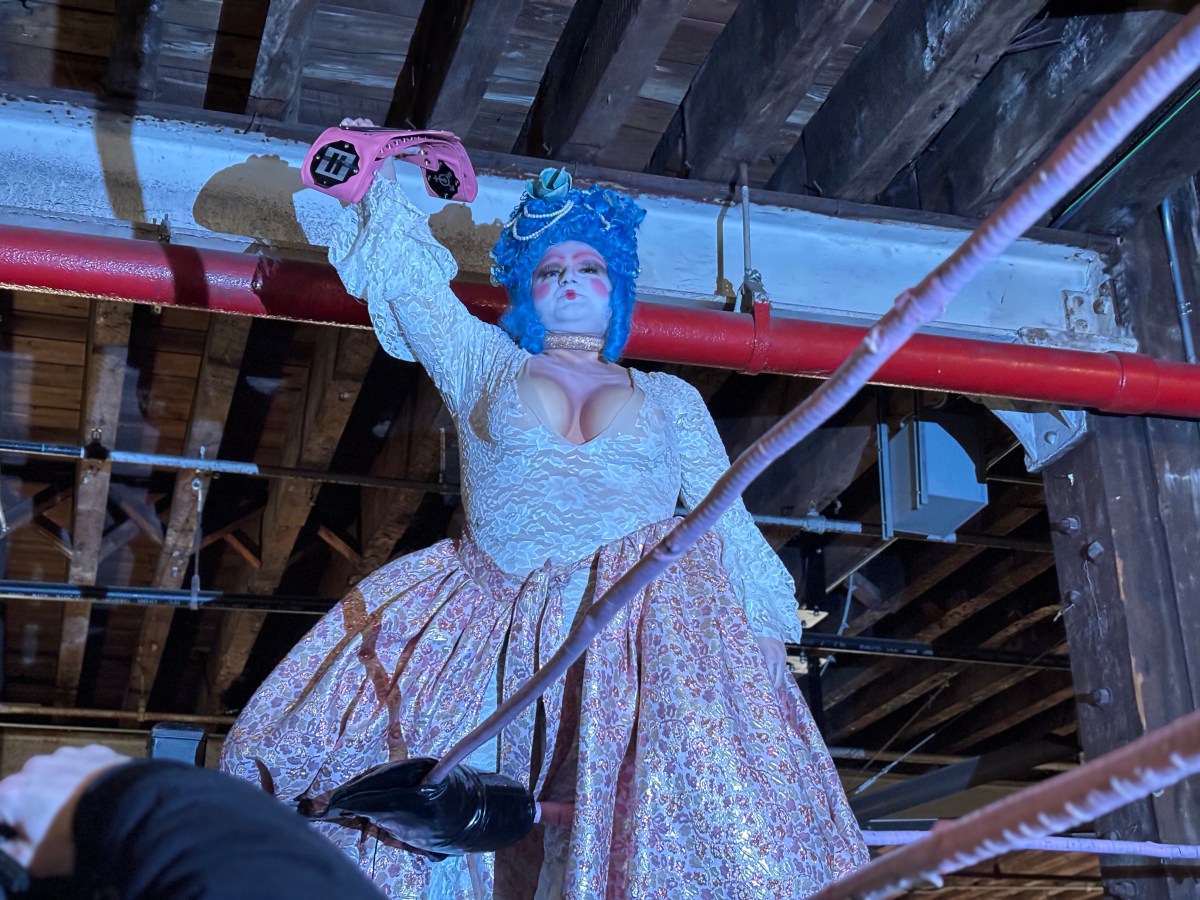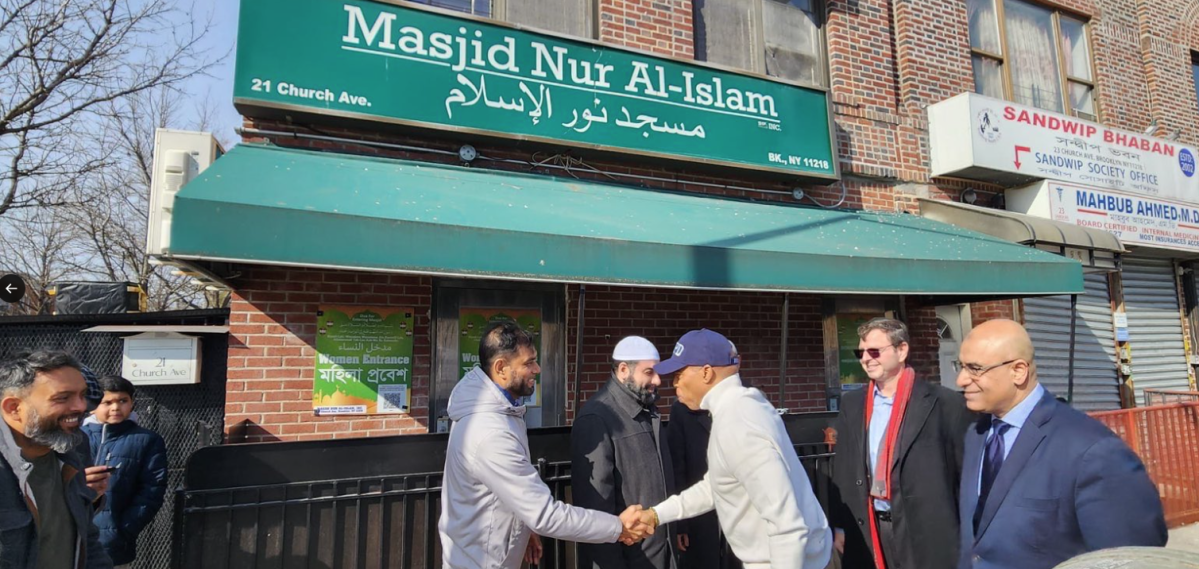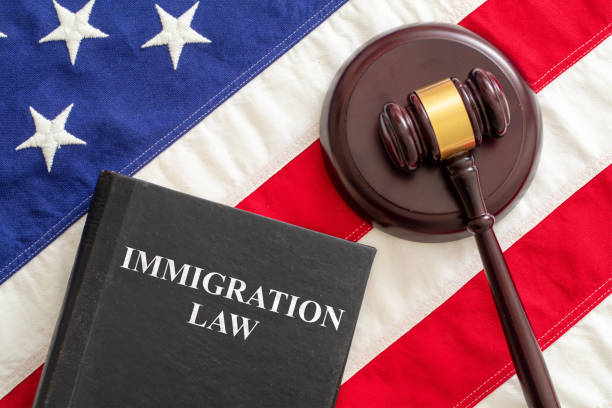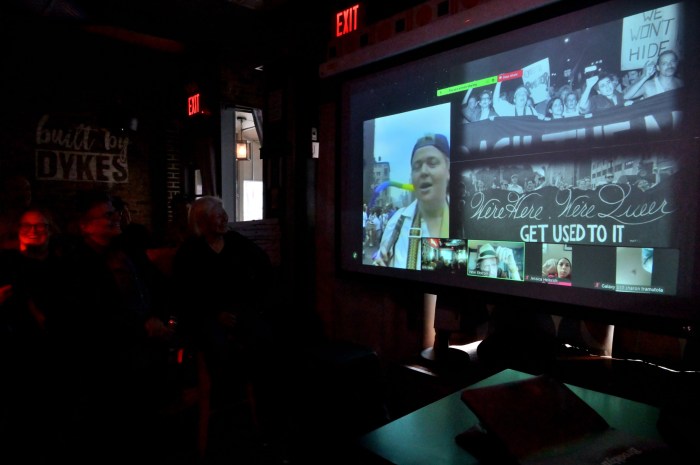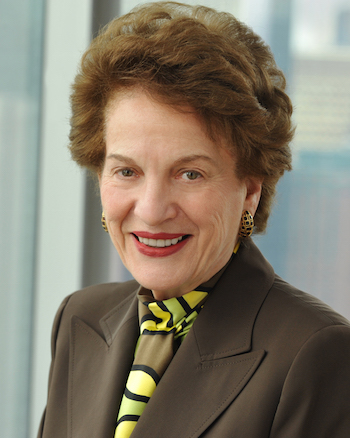
BY ARTHUR S. LEONARD | When retired Chief Judge Judith Kaye of the New York Court of Appeals died on Jan. 7 at age 77, most accounts of her passing mentioned her dissenting opinion in Hernandez v. Robles, the 2006 case in which the state’s highest court voted against the claim that same-sex couples have a constitutional right to marry, as one of her most notable opinions. Her opinion, in the 4-2 case, however, was merely the capstone of a long career on the court during which she often spoke out eloquently in cases important for the rights of gay people as well as those affected by the AIDS epidemic.
Governor Mario Cuomo appointed Kaye to the court early in his first term in 1983, and then elevated her to the position of chief judge in 1993, a post she held until she reached the state constitutional age limit of 70 in late 2008. As of her retirement, she was the longest-serving judge in the Court of Appeals’ history, as well as the longest-serving chief judge. Kaye was also the first woman to sit on the state’s highest bench and the first to serve as its chief judge.
At the time of her appointment, Kaye had no judicial experience, having worked as a corporate and litigation lawyer in private practice for most of her career, so Cuomo naming her stirred some controversy. She soon, however, assumed a leading role on the court, especially as a defender of civil rights and minority rights.
She joined the majority of the court in 1989 in a historic ruling, Braschi v. Stahl Associates Company, which for the first time in American law recognized cohabiting same-sex couples as members of each other’s family –– in this case, for purposes of the state’s Rent Control Law, thus protecting the right of a surviving same-sex partner to take over a lease if their apartment was rented in the name of a deceased partner.
Following up on this important ruling, Kaye wrote the court’s 1993 opinion in Rent Stabilization Association of New York v. Higgins, which upheld the New York Division of Housing and Community Renewal’s regulations that extended the Braschi ruling to the far larger rent-stabilization system.
D.H.C.R. had specifically noted the impact of the AIDS epidemic on the housing security of gay men as a justification for the regulation. Kaye rejected the plaintiff’s argument that extending protection to nontraditional families through an administrative regulation was an impermissible legislative act by the agency, and she also rejected the argument that extending this protection had unconstitutionally deprived the owners of property rights.
In 1991, Kaye penned an important dissenting opinion in the case of Alison D. v. Virginia M., when the court ruled that a lesbian co-parent of a child was a “legal stranger” who could not seek court-ordered visitation rights after separating from the child’s birth mother. The court rested its ruling on the formal language of New York’s antiquated Domestic Relations Law, which even today adheres to a vision of families that fails to reflect reality. Kaye criticized the court for exalting legal formality above a central purpose of family law –– protecting the best interests of children.
On the same date as the Alison D. ruling, Kaye joined the majority in an important ruling upholding a determination by the state’s Public Health Council not to list H.I.V. infection as a condition requiring mandatory testing and contact tracing. The Council was concerned that such a listing would prevent infected persons from cooperating with public health officials and impose a barrier to addressing the H.I.V. epidemic. The New York State Society of Surgeons had challenged this decision, but the court held that the Council’s ruling had a rational basis that should not be second-guessed by the court.
In a sharply divided 4-3 ruling in Matter of Jacob, a 1995 case, Kaye wrote for the majority, creatively interpreting the state’s antiquated adoption statute to allow for second-parent adoptions –– a critically important ruling in mitigating the unfortunate impact of the Alison D. ruling. Since the Court of Appeals considered same-sex co-parents to be “legal strangers,” the only way they could protect the relationship with their children would be if they could adopt them, with the permission of their partner.
“Indeed,” she wrote, “viewed from the children’s perspective, permitting the adoptions allows the children to achieve a measure of permanency with both parent figures and voids the sort of disruptive visitation battle we faced in Matter of Alison D. v. Virginia M.”
A year later, Judge Kaye provided the crucial vote in a 4-3 decision holding that a dentist’s office is a place of public accommodation, so a dentist would be in violation of the Human Rights Law for refusing treatment to patients the dentist knew or suspected to have H.I.V. infection.
Finally, of course, there is Kaye’s dissent in Hernandez, in which she argued on behalf of herself and Judge Carmen Ciparick that same-sex couples did have a right to marry.
“This State has a proud tradition of affording equal rights to all New Yorkers,” she wrote. “Sadly, the Court today retreats from that proud tradition.” After noting the long list of federal and state cases holding that “marriage is a fundamental constitutional right,” she wrote that “fundamental rights, once recognized, cannot be denied to particular groups on the ground that these groups have historically been denied those rights. Indeed, in recasting plaintiffs’ invocation of their fundamental right to marry as a request for recognition of a ‘new’ right to same-sex marriage, the Court misapprehends the nature of the liberty interest at stake.”
Kaye’s confidence was vindicated over the past several years as scores of courts, many of them citing her dissenting opinion, declared state bans on same-sex marriage elsewhere unconstitutional, culminating in the Supreme Court’s Obergefell ruling on June 26, 2015.
After New York’s Legislature enacted marriage equality in 2011, Kaye happily performed same-sex marriage ceremonies. Perhaps not so coincidentally, the lead attorney in US v. Windsor, the case that struck down the federal ban on recognizing same-sex marriages in 2013, was Roberta Kaplan, a former law clerk for Kaye whose book about the case describes the important role the judge played for her as a mentor. Kaye had several openly gay and lesbian clerks, some of whom have themselves become judges.
On another issue, one of Kaye’s accomplishments was opening up Family Court to reporters. Judges had feared their decisions would be scrutinized by the media, but Kaye prevailed.
























